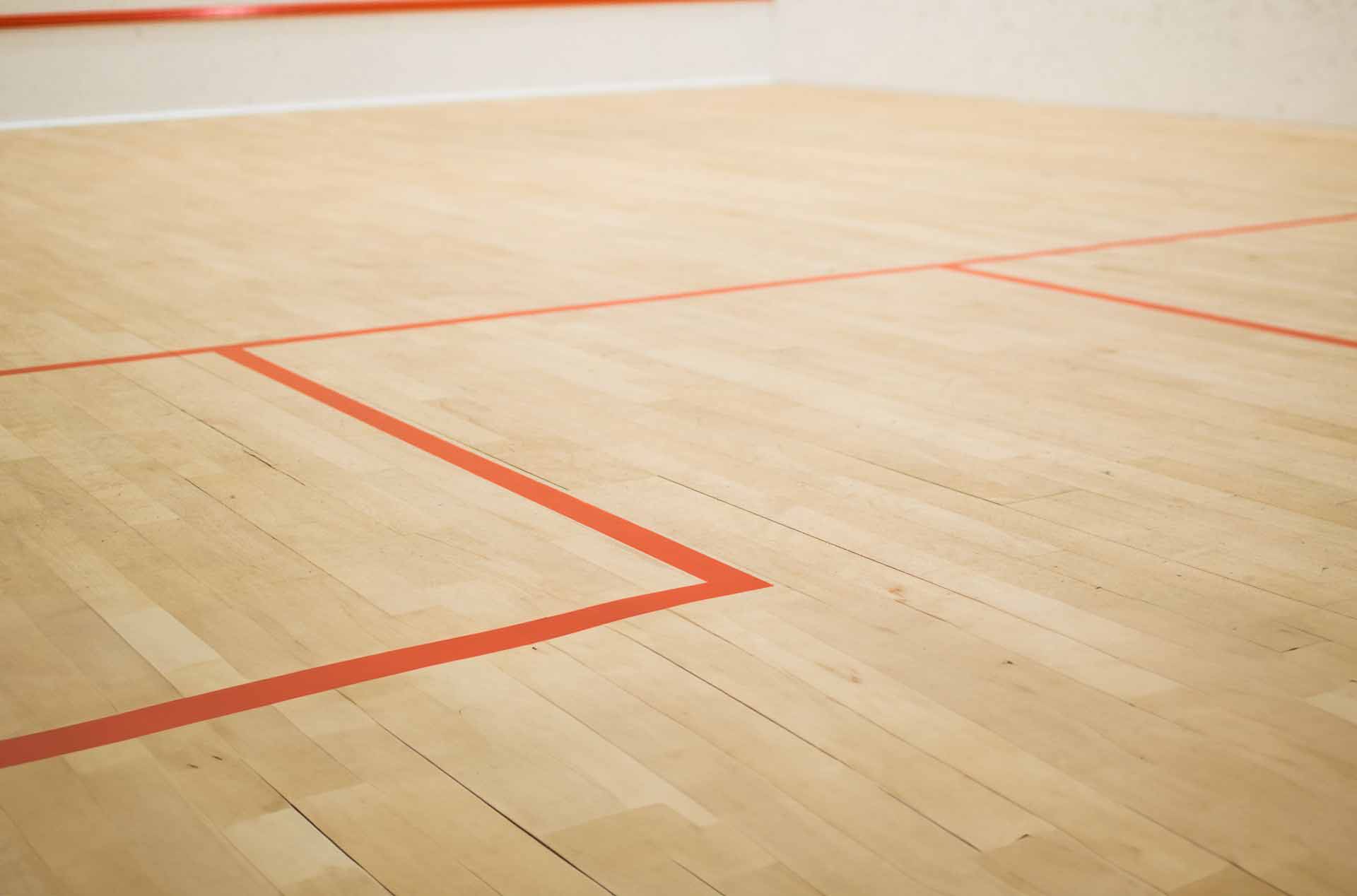Your cart is currently empty!
Reading Time:
Hardball Doubles Squash Positioning
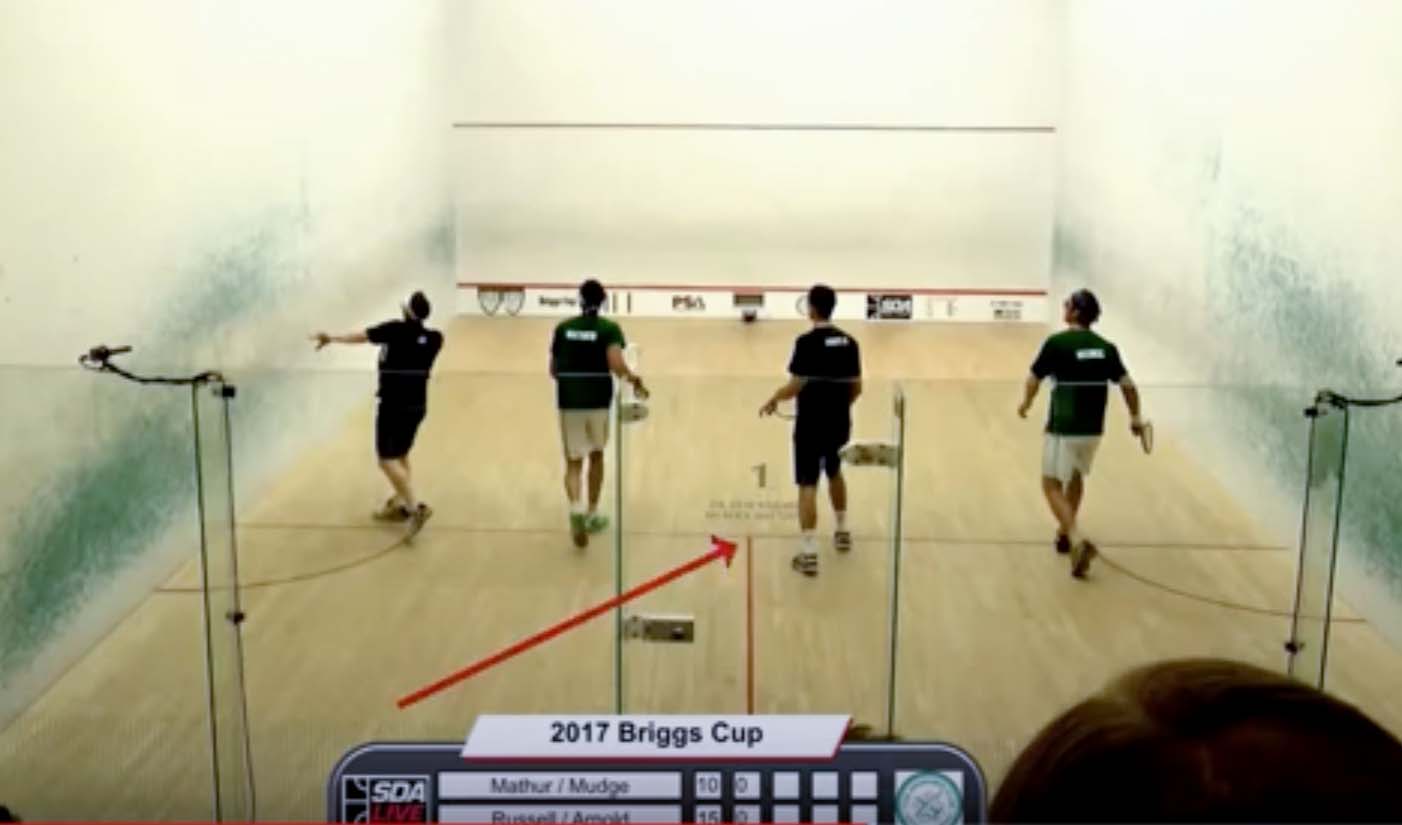
A large part of the the hardball doubles squash game is positioning. Because the ball is travelling quickly and there are four players on the court, it’s important to know how to clear so that the other team can hit the ball safely. Understanding where you should be and when to move will also improve your game.
The Doubles “T” Position
Unlike singles squash your “T” position is no longer the centre of the court. Depending on the “wall” (side you play), your “T” position will be close the where the service “box” intersects the short line.
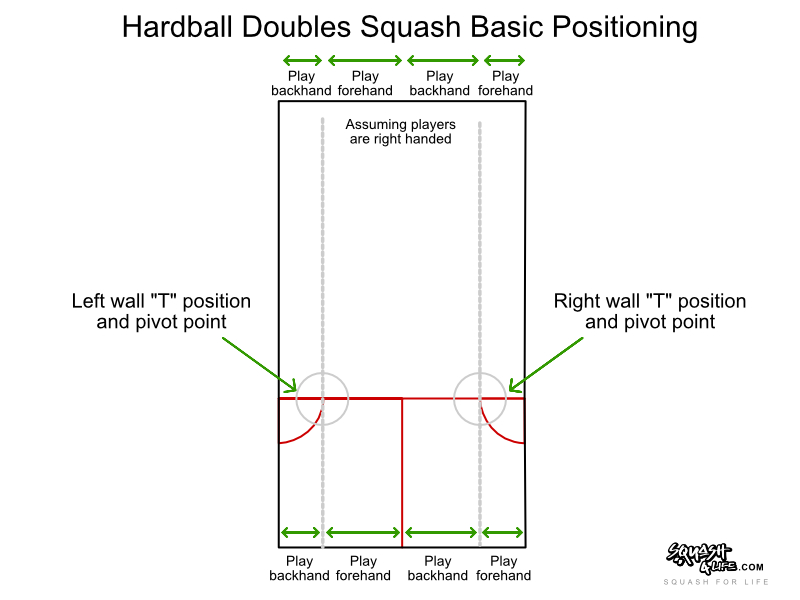
Pivoting From The Doubles “T”
You also pivot from this area, playing your backhand on one side and your forehand on the other. The diagram below assumes both players are right-handed.
Taking Shots Up the Middle
When there are two right handed players on the court, the default is that the left wall player takes shots that come up the middle with the assumption that their forehand will be stronger than their partner’s backhand. This of course depends on the shot being equally convenient for both to play.
In the following diagram, the Yellow team’s left wall player is retrieving a ball from the back left corner and intends to play a cross-court shot to the right-wall Blue player.
Clearing to the Middle
When you anticipate receiving a shot you will want to go to your “T” position. In most cases you should clear by moving more toward the middle of the court if it is not your turn to hit or recieve. Not all of the opponents that play on your side will automatically rotate with you. Some will even block you if they can, or settle directly in the middle. This is particularly common with singles players who have not learned to adjust to the doubles game, although some seasoned doubles player will do this as well.
Opponents that Stand in the Middle Even When Its Their Ball
If your same-side opponent is blocking you, you can call a let. But it gets tricky if your same side opponent stands in the middle even when it’s their teams turn to receive the shot. This forces you on the outside and if the ball comes to toward you, you either have to scramble to get out of the way of your opponent or a let is called on you.
If you stand behind them but then you risk not seeing what is going on, so if your oopponent is not to far up the line, the best option is to move around to stand in front of them in the middle of the court.
For opponents that cheat forward, a stroke is given when a let is asked for if the person blocking is in the front third of the court.
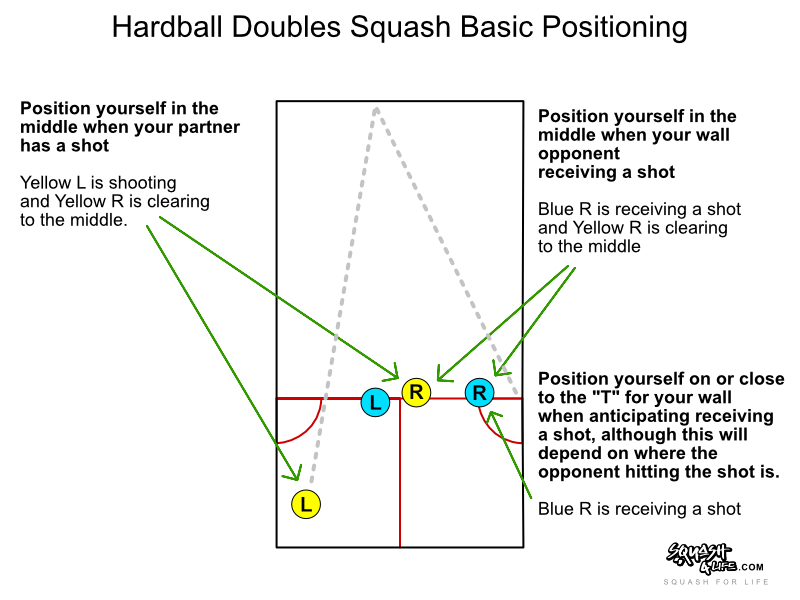
This option allows you to see and be ready to run to the ball.
Clearing to the Side Wall
In some cases, the ball comes to the middle, either because someone hit to the middle or because it has bounced on the wall in such a way it bounces off a wall toward in the middle. It is common for some players to face the front wall and not to watch the ball. These players are at risk of being hit by a player who is facing the backwall to get the ball bouncing off of it!
In an ideal world the player who is waiting to get a ball off bouncing off the back wall should quickly check to make sure everyone has cleared, but this is not always possible even for intermediate players as taking your eye off the ball even for a moment may result in a mis-hit or missing the ball completely.
Everyone should always watch so that you know whether you need to clear to the middle or the side depending on whether the ball will be hit from.
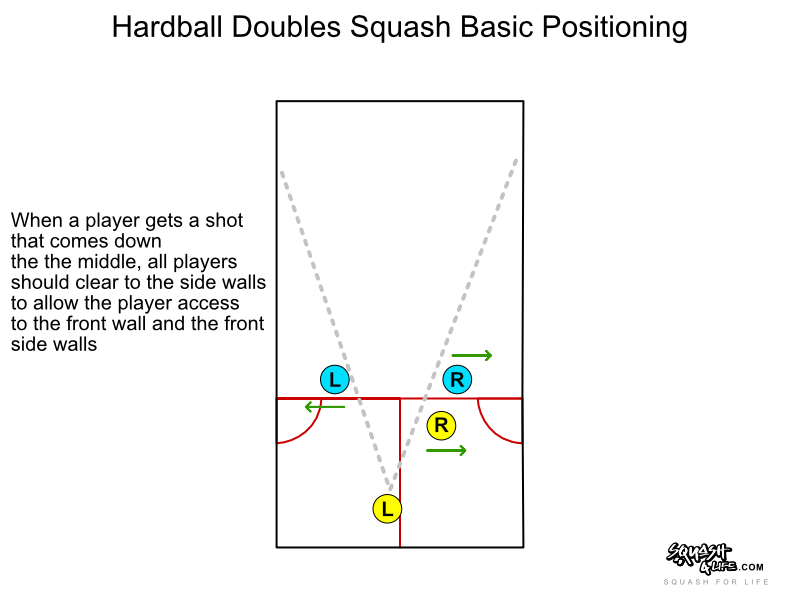
Both Players Move Up for Counter Drops
Players will sometimes play in a staggered position with one more up front than the other who might be hanging back. Sometimes your partner will cover for you when a ball comes back on your side and you are too far up front and vise versa.
However while one person can, in theory, cover the back, it is far harder for one person to cover the front because any shot hit short is not in the air long enough for one player to cross sides to get it. Therefor both players must move forward to cover a drop.
It’s also important to keep in mind that the aim is not volley as much as possible to avoid having to go back for balls. This means when a ball is sent to the back, it usually has to be lobbed. The high lobbing ball gives you time to recover your positions.
Here is a video explaining positioning in action.
by
Tags:
